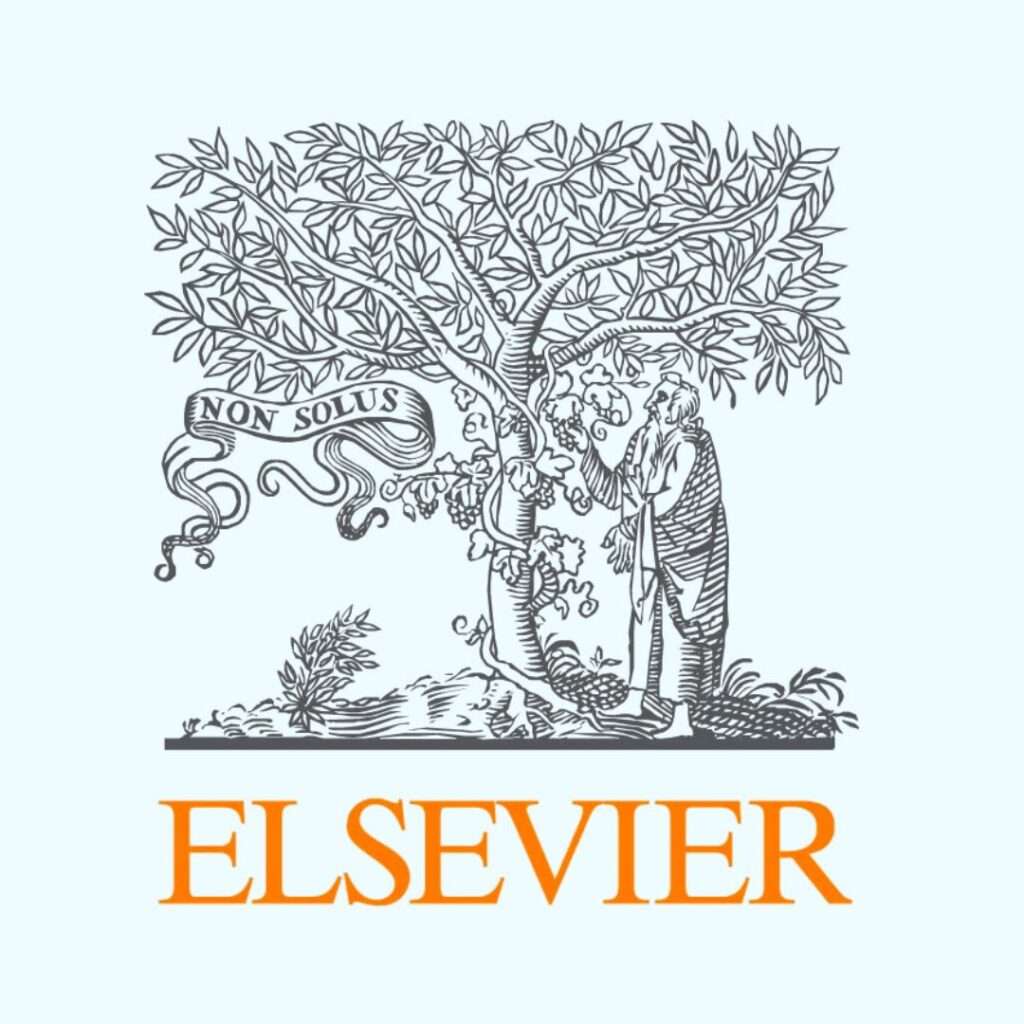Table of Contents
- Introduction
- Academic Publishing and Academic Journals
- Understanding Market Influence
- Financial Aspects of the Largest Academic Publisher
- Elsevier and Open Access
- Shaping Academic Discourse
- Conclusion
Introduction
Elsevier is presently the largest academic publisher in the world. Based in the Netherlands, Elsevier publishes over 2,600 journals and countless academic books annually.
The publisher claims almost 20% of the market share of scientific articles. Its publications span every academic discipline – from healthcare to engineering to economics. Due to its substantial size and portfolio, Elsevier holds sway over research trends and discourse.
Its high journal impact factors also pressure academics to publish in Elsevier journals to advance their careers. Elsevier journals have published some of the most highly cited and influential modern research works. Their size and scope are unrivaled, accounting for a significant market share in scientific, technical, medical, and social science publications.
Some of Elsevier’s high-impact journals include the following:
- The Lancet: One of the oldest and most prestigious medical journals covering various medical specialties.
- Cell: Focuses on life sciences and publishes cutting-edge molecular biology, genetics, and cell biology research.
- Chemical Engineering Science: Covers chemical engineering research, including process systems engineering, chemical reaction engineering, and more.
- Journal of Financial Economics: Focuses on studies related to financial economics, corporate finance, and financial markets.
- Neuron: Focuses on neuroscience, covering various aspects of brain research, including cellular and molecular neuroscience.
Academic Publishing and Academic Journals
Academic publishing plays a vital role in disseminating research and advancing human knowledge. The publications produced by academic publishers contain the latest discoveries and insights across all fields of study. As such, these publishers wield immense influence over the trajectory of academic discourse and which ideas gain traction.
Academic journals and books are crucial for researchers to build on prior work and have their contributions vetted and distributed. Coordinated by academic publishers, the peer-review process helps uphold research quality and integrity. Publishers also provide editing, formatting, printing, and distribution services. Academic publishers shape academic incentives and careers by determining which articles are published. Their choices directly impact which studies gain exposure and citation.
Being the largest academic publisher, Elsevier has an extensive global footprint and network. Some key facts about their scale include:
- Publish over 2,600 journals, increasing each year
- Over 33,000 book titles covering major subject areas
- 180 open access journals with Creative Commons licensing
- Offices in over 20 countries around the world
- Over 150 Nobel Prize winners have published works with them
In addition to their overall market presence, Elsevier has revolutionized many academic disciplines. Some examples include:
- Medicine: Over 300 medical journals publishing pioneering biomedical research.
- Technology: Leading publications in computer science, engineering, and materials science.
- Business: Highly cited journals in economics, accounting, finance, and management.
- Social Sciences: Journals across psychology, political science, education, etc.
They have become invaluable for researchers and institutions everywhere by covering various specialties. Their academic influence spans continents, and they continue expanding into emerging fields.
Understanding Market Influence
The largest academic publisher has established a dominant position in the scholarly journals and publications market. With a vast portfolio spanning all major academic disciplines, this publisher has unprecedented reach and influence over disseminating academic research.
This dominance likely has both positive and negative effects. On the one hand, the publisher’s journals and platforms allow research findings to rapidly reach a large audience of scholars. The reputation and visibility of their publications incentivize academics to publish with them. However, some critics argue this entrenches “prestige bias” and stifles intellectual diversity in favor of research trends.
Financial Aspects of the Largest Academic Publisher
As of 2022, Elsevier’s revenue reached an impressive USD3.7 billion, with an operating income of USD1.37 billion and a net income of USD2.6 billion, stamping its presence as the largest academic publisher in the world. The company’s profitability is striking, boasting a profit margin close to 40%, which not only rivals but, in some cases, surpasses tech behemoths like Apple and Google.
This level of profitability is particularly noteworthy within the academic publishing industry, where Elsevier has been described as more profitable than companies such as Microsoft, Google, and Coca-Cola. The company’s success can be attributed to its expansive portfolio of over 2,600 journals (and counting) and the publication of nearly half a million articles per year. In 2019 alone, Elsevier reviewed, edited, and disseminated 18% of the world’s scientific articles.
As a highly profitable company with significant influence over academic research and discourse, its pricing models and access policies have significant implications for the broader scholarly community.
Elsevier and Open Access
Elsevier’s role in advancing open access is multifaceted and has evolved. Open access provides unrestricted online access to scholarly research, allowing anyone to read, download, cite, or otherwise benefit from these works without a subscription or paywall. The open access movement aims to increase the dissemination and impact of academic research by making it more accessible to a broader audience, including researchers, educators, policymakers, and the general public.
As the largest academic publisher, Elsevier has had to navigate the growing demand for open access publishing while maintaining its traditional subscription-based business model. In response to this demand, Elsevier has taken several steps to engage with open access:
- Open access journals: Elsevier publishes some fully open access journals where all articles are freely available online. These journals cover various academic disciplines and allow authors to open their work immediately upon publication, typically in exchange for an article processing charge (APC). This fee covers the costs of peer review, editorial work, and online hosting.
- Hybrid journals: Elsevier offers a hybrid open access model in many traditional subscription-based journals. In these cases, authors can choose to make their articles open access by paying an APC. This allows authors to comply with open access mandates from funders or institutions while still publishing in prestigious subscription journals.
- Open archive: Elsevier has implemented an open archive policy for certain journals, where articles become freely accessible after an embargo period following their original publication. The duration of this embargo can vary depending on the journal’s field and the specific agreements in place.
- Open science initiatives: Elsevier has invested in various open science initiatives and platforms that aim to improve the transparency and reproducibility of research. These initiatives may include sharing data sets, protocols, and other research outputs that support the published findings.
- Licensing and partnerships: Elsevier has entered into agreements with institutions, consortia, and countries to allow for more open access publishing. These deals often involve subscription fees and APCs to enable researchers affiliated with these institutions to publish open access in Elsevier journals.
- Policy engagement: Elsevier participates in discussions around open access policies, working with governments, funding bodies, and institutions to shape the future landscape of academic publishing.
It’s important to note that Elsevier’s engagement with open access has been met with both support and criticism. Proponents argue that Elsevier’s involvement helps legitimize and expand the reach of open access. Critics have pointed out that high APCs can be a barrier for some authors, particularly those without adequate funding or from lower-income regions, potentially exacerbating inequalities in academic publishing.

Overall, Elsevier’s role in advancing open access reflects a balance between adapting to the changing expectations of the research community and preserving its commercial interests within the academic publishing industry.
Shaping Academic Discourse
Being the largest academic publisher, Elsevier has an outsized influence on shaping academic discourse and knowledge dissemination. As the dominant player in academic publishing, its journals and publications reach a vast swath of the academic community across disciplines. This gives the publisher substantial control over which research gets disseminated and what ideas shape various fields.
Challenges and Opportunities of Market Dominance
The publisher’s market dominance presents both challenges and opportunities. On the one hand, some argue its hegemony limits access to information and narrows the range of ideas shared. Critics contend too much control rests in the hands of one company. However, others note the publisher’s economies of scale allow it to produce high-quality publications efficiently. Its reach also facilitates cross-disciplinary discourse. Both sides have good arguments over the implications of the publisher’s influence.
Conclusion
Examining Elsevier, the largest academic publisher, gives us critical insights into their dominance and influence. Though they have facilitated immense research, their market control raises concerns about diversity and access to scholarly communication.
Elsevier has established a powerful position, accounting for many academic journal articles across disciplines. Their scale and reach enable widespread dissemination yet concentrate influence over what research thrives.
Financial aspects also warrant consideration – while profits enable growth, high costs limit access. More transparency around pricing and open access initiatives could broaden access. By engaging thoughtfully, we nurture a scholarly ecosystem where all voices are empowered to participate. Our shared future depends on how we structure and steward the ways research takes shape.

1 thought on “Elsevier, the Largest Academic Publisher”